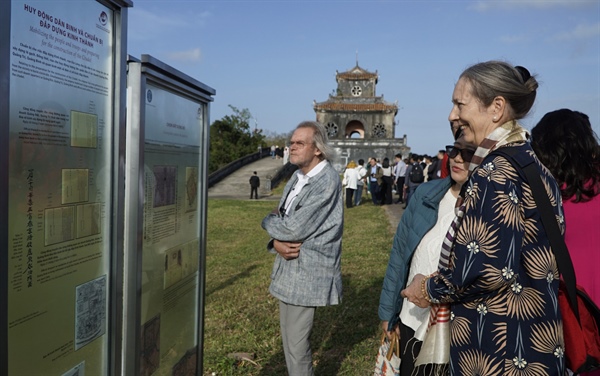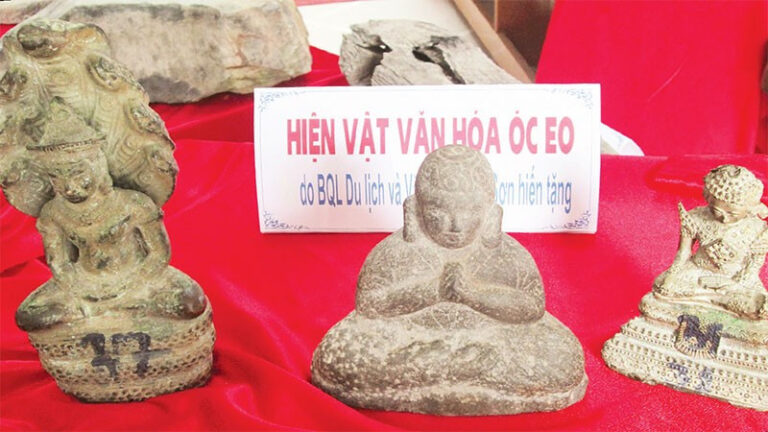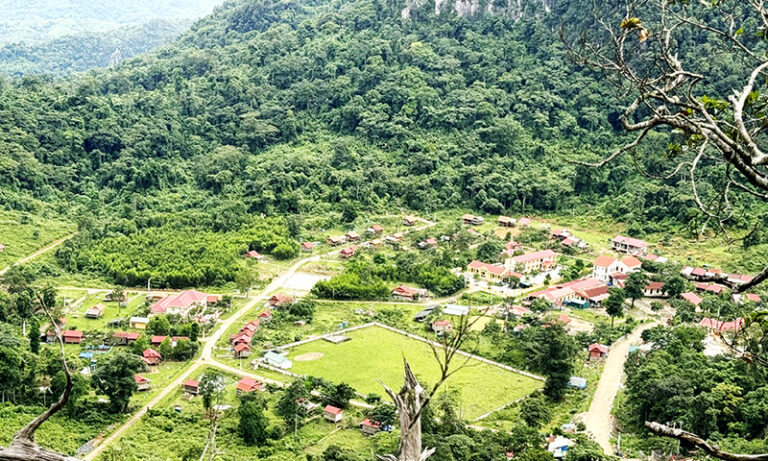(TITC) - Hue Monuments Conservation Center coordinated with the National Archives Center I to organise an exhibition with the theme "Hue Citadel - Remaining traces of the past", introducing to the public nearly 100 precious documents and images about the construction of the ancient citadel.
This is the first time that the exhibition has published many royal documents of the Nguyen Dynasty with royal autographs and rare images, thereby providing visitors with valuable information about Hue Imperial Citadel relics. The exhibition includes 2 parts: "Thuan Hoa - Phu Xuan - Hue in history" and "Hue Citadel - Traces of a dynasty".

International visitors visit the exhibition space (Photo: VHO)
220 years ago, King Gia Long of the Nguyen Dynasty expanded the capital and built the Hue Citadel. The location of Hue citadel was chosen by the Nguyen lords as the capital of Dang Trong, then the Tay Son dynasty and by the Nguyen dynasty it was expanded and built on a much larger scale. The construction lasted nearly 30 years (1805-1832), from the reign of King Gia Long to the reign of King Minh Mang. Hue Citadel was built according to Vauban architecture, with an area of 520 hectares and a circumference of over 10,500 metres. Hue Citadel consists of 3 citadels: Imperial City (outer citadel), Royal Citadel and Forbidden Citadel, all located on an axis facing the South. The citadel has great value in terms of defence, around the citadel there are 24 fortresses and a bastion, called Tran Binh Dai (or Mang Ca). In modern Vietnamese history, Hue Citadel is the most massive and large-scale construction.
After the ups and downs of history and the changes of time, Hue Citadel suffered destruction and damage, with only vestiges remaining of some buildings. Still the traces of the old citadel and the existing buildings have been imprinted in every page of the Nguyen Dynasty's Imperial Records, world documentary heritage. According to Ms. Tran Thi Mai Huong, Director of the National Archives Center I, the organisation of this exhibition aims to introduce precious information and spread the value of the Nguyen Dynasty's Imperial Records heritage to the tourist community. Thereby, visitors to Hue not only admire the beauty of the monuments but can also receive valuable information and stories about the process of building the ancient citadel.
This exhibition was held in an open space on the Thuong Thanh walking route, from Cua Ngan gate - through Ky Dai (Flag Tower) - and to Quang Duc gate (on South side of Hue Citadel).
Tourism Information Technology Center
















